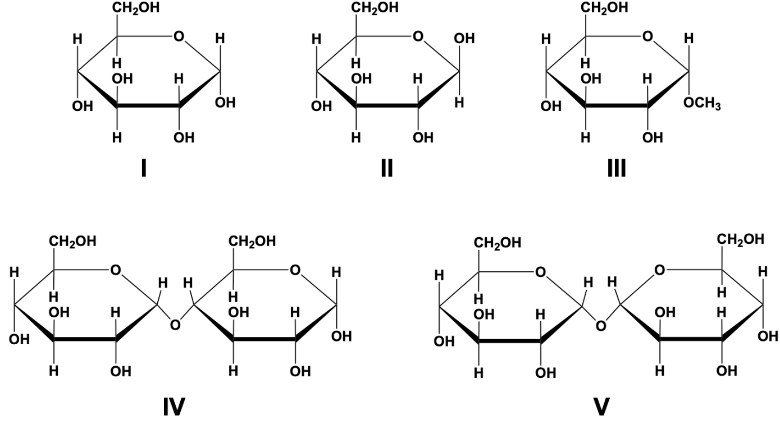In this video, we're going to begin our discussion on mutarotation. Now, mutarotation is really just a specific type of epimerization, and so before we actually define mutarotation, it's first helpful to define epimerization. And so, epimerization is defined as the process of interconverting epimers. And really that's just a fancy way of saying changing one epimer into the other epimer. Now, of course, we know from our previous lesson videos that epimers are just specific types of diastereomers that differ only in the configuration of any one single chiral carbon. And so, because epimers are just specific types of diastereomers and diastereomers are not mirror images, this also means that epimers are not mirror images which is why this guy right here is kind of confused looking into the mirror and seeing that he is not looking at a mirror image.
Now, if we take a look at our image down below over here, notice that D-glucose and D-mannose are epimers. And the reason that they're epimers is because notice that they only differ from each other in the configuration of just one single chiral carbon, and that is the C2 chiral carbon that we have highlighted here. So notice that the C2 chiral carbon on D-glucose has a D configuration since it's pointing to the right. And notice that the C2 chiral carbon on D-mannose has an L configuration since it's pointed to the left. But outside of the configuration of the C2 chiral carbon, they are identical to each other, which is what makes these two epimers of each other.
Now, the process of epimerization is literally the process of converting one epimer into the other epimer. And so, of course, this is going to require changing the configuration. And so, if we have to change the configuration, it means that we're going to have to break and reform bonds. And so, breaking and reforming stable covalent bonds is generally going to require a catalyst. And so, epimerization generally is going to require a catalyst, such as an enzyme, to break bonds and then reform the bonds in a different orientation. And again, this is all because there is a change in the configuration. And so moving forward, this line here requiring a catalyst is going to be something that we're going to want to keep in mind as we move on and discuss mutarotation because mutarotation will not require a catalyst. But here, this here concludes our introduction to epimerization, and in our next lesson video, we'll talk about mutarotation. So, I'll see you guys there.


